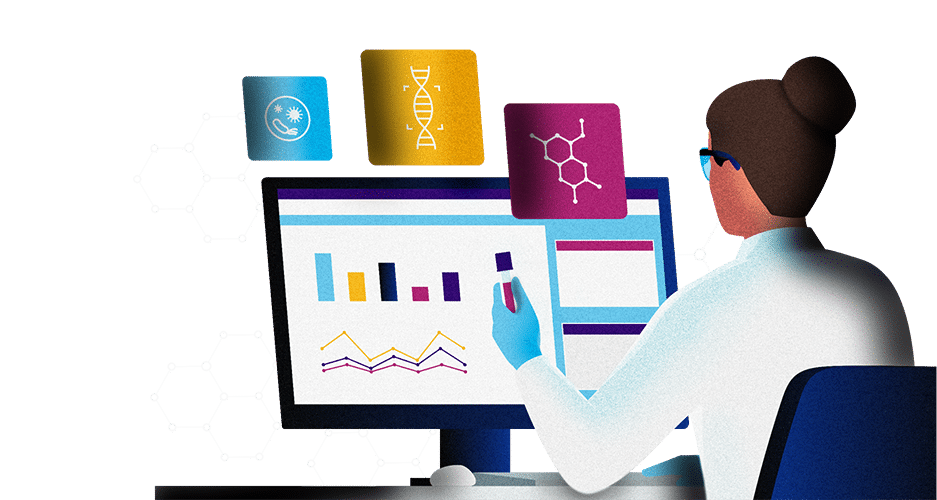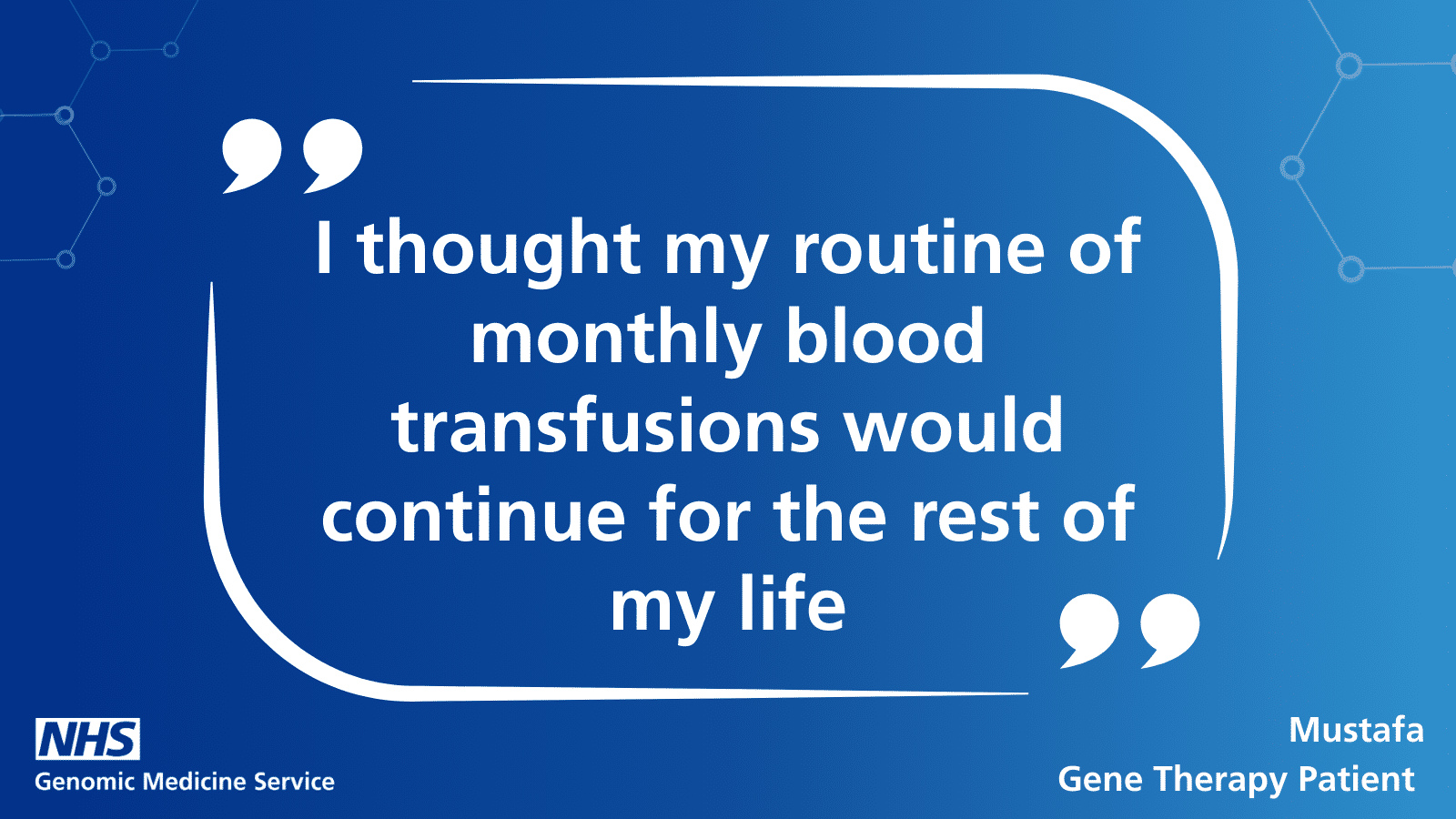Mustafa's life changed when he received the offer to be a part of a gene therapy clinical trial.

At four months old Mustafa was diagnosed with beta-thalassemia major. A severe form of the haematological condition thalassaemia. Both his parents had beta-thalassemia minor, which leads to a milder presentation of the disease, meaning they both had one copy of the faulty gene, HBB. There was no prenatal testing at the time and by inheriting both copies of the faulty gene, Mustafa had a more severe manifestation of the disease.
Growing up Mustafa thought it was “cool” to often be missing school. Every three weeks he would be in hospital to have a blood transfusion. It could be as much as three bags, each being nearly a pint, and as children cannot tolerate fast infusion rates, each visit would take up to nine hours.
Thalassaemia is the name of a group of genetic conditions that affect haemoglobin production and, as a result, red blood cell size. Due to this, those affected experience severe fatigue and weakness.
As well as the blood transfusions every three weeks, Mustafa had at home nightly injections to manage iron overload, a side effect of the transfusions.
Mustafa thought this routine would continue all his life, however everything changed when he received a call from his consultant offering him the opportunity to be involved in a clinical trial. He was at work when he got the call and was told about the possibility of having a gene therapy treatment. He still vividly remembers picking up the phone, with his doctor at the other end.
What followed was a long process with many appointments where the clinical team explained every step of the trial and gene therapy procedure. He underwent a “full body MOT” with medical assessments, MRI scans and lung function tests all to make sure he was he was fit for the trial.
Gene therapy is a treatment that modifies the genome of specific cells to treat or prevent a genetic condition. In Mustafa’s case the gene therapy edited a gene in his bone marrow stem cells, so that his body could produce functioning haemoglobin.
During the stem cell collection phase, he stayed in a hotel near the hospital for four days and received injections twice a day to stimulate stem cell production. He also had regular blood tests and his usual transfusions. After the four days he was admitted to hospital, where he received plerixafor to help mobilise blood cells from his bone marrow into his bloodstream.
After this, stem cell collection began and lasted for three days with the collection running from 9am to 3pm each day. “I could see the cells being drawn out of my blood. Once the collection started, we couldn’t stop, so I had to sit still for six hours each day”. Once collected, the stem cells were sent to the US for processing, and for his cells to undergo gene editing. The goal was to gather around 15,000 viable cells.
It wasn’t until six months later that Mustafa was invited back for the gene therapy.
Before being transplanted with his edited cells, Mustafa had to undergo four days of chemotherapy, this was to clear the body of existing blood stem cells.
A week later, his genetically modified stem cells were infused back into his bloodstream.
However, Mustafa spent six weeks in hospital following his treatment. He experienced a range of side effects from fatigue, fevers with the worst being mucositis, a painful inflammation of the mouth, a common side effect of chemotherapy. Because of this, Mustafa was unable to eat for two weeks.
“The chemo also meant I started losing my hair, so my brother came to shave it off for me.”
“Those weeks in hospital were hard, it was difficult to sleep, and I had a blood test at 6am every morning.”
Mustafa worked with a physiotherapy team to slowly regain his strength, after being bed bound for so long. But eventually, he was well enough to go home.
He continues to attend follow-up appointments as part of the clinical trial and undergoes regular monitoring, including bone marrow biopsies, to ensure the treatment is working as expected.
Now Mustafa is no longer reliant on blood transfusions, and his haemoglobin levels remain stable. He feels less pain, less fatigue, and a new sense of freedom in everyday life.
